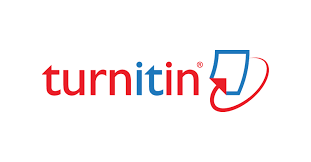The Effect of Nano Sized TiO2 Particles on Improving the Stress Resistance and Thermal Stability of Unsaturated Polyester
DOI:
https://doi.org/10.30526/38.3.3949Keywords:
Unsaturated Polyester, Titanium dioxide, Mechanical tests, Thermal conductivity, Thermal stabilityAbstract
An unsaturated polyester's (UPE) mechanical and thermal properties were modified by incorporating nanosized titanium dioxide (TiO2) particles with 1, 2, 3, 4, and 5% weight ratios. 3% of TiO2 is the best weight percentage that can be added to UPE to improve its impact strength from 8.74 MPa to 8.87 MPa, its hardness value from 82.23% to 86.63%, its tensile strength from 7.698 MPa to 24.76 MPa, and its thermal conductivity from 0.308499 W/m.oC to 0.566916 W/moC. Also, the thermal stability of UPE/3% TiO2 was improved using thermogravimetric analysis (TGA). XRD measurement was employed to verify the change caused by adding TiO2 particles to the internal structure of unsaturated polyester. Also, the change in the microstructure of unsaturated polyester after adding TiO2 nanoparticles was studied using scanning electron microscope analysis, where the TiO2 nanoparticles showed a good distribution in the matrix, and the TiO2 had good compatibility in the unsaturated polyester matrix.
References
1. Abbas AF, Raghad UA, Nadia AB. Studying thermal and mechanical properties of unsaturated polyester reinforced with TiO₂. Int J Innov Sci Eng Technol. 2015;2(5):337–339. https://doi.org/10.1021/ijiset.1021
2. Lutifi RB, Widad HJ. Improvement of dental composite resin using supra-nano chicken thigh bone fibers. Ibn AL-Haitham J Pure Appl Sci. 2023;36(2):156–170. https://doi.org/10.30526/36.2.299
3. Hameed NA, Widad HJ, Balqees MD. Study of the properties of epoxy nanocomposite reinforced with different weight percentages of antimony trioxide. Diyala J Pure Sci. 2019;15(2):11–23. https://doi.org/10.24237/djps.15.02.472C
4. Patricio T, Raul Q, Mehrdad YP, Jose LA. Eggshell, a new bio-filler for polypropylene composites. Mater Lett. 2007;61(22):4347–4350. https://doi.org/10.1016/j.matlet.2007.01.102
5. Durowaye SI, Lawal GI, Akande MA, Durowaye VO. Mechanical properties of particulate coconut shell and palm fruit polyester composites. Int J Mater Eng. 2014;4(4):141–147. https://doi.org/10.5923/j.ijme.20140404.04
6. Jaafar HI, Fadhil RN. The effect of utilization aluminum powder at the mechanical properties for epoxy resin. Int J Sci Res. 2017;6:1847-1850. https://doi.org/10.21275/ART20176426
7. Farizal H, Damian DS, Achmad A, Nuraeni A, Septoratno S. Epoxy-based polymer suitable for water shut-off application. SPE/IATMI Asia Pac Oil. 2015;12(2):23–29. https://doi.org/10.2118/176457-MS
8. Mohammed R. Study of some mechanical properties and erosive behavior by Taguchi method for hybrid nanocomposites. Eng Technol J. 2018;36(4):471–479. https://doi.org/10.30684/etj.36.4A.15
9. Kttafah HR, Adil IK. The effect of date palm trunk particles as improvement reinforcement material of polymeric composites and sustainable environmental material. AIP Conf Proc. 2019;2123(1). AIP Publishing.https://doi.org/10.1063/1.5117022
10. Fadhil IN, Mohammed AT. Effect of addition of (Cu and CuO) on the thermal properties of poly(methyl methacrylate). AIP Conf Proc. 2019;2123(1). AIP Publishing. https://doi.org/10.1063/1.5117013
11. Al-Mosawi AI, Shaymaa AA, Abbass AH. Sustainable procedure for using waste of date seeds as a reinforcement material for polymeric composites. Open Access Libr J. 2018;5(3):1–9. https://doi.org/10.4236/oalib.1104384
12. Hilal KS. Studying some of the mechanical properties of unsaturated polyester reinforced by recycled natural materials. Al-Qadisiyah J Eng Sci. 2015;8(2):137–146.
13. Jassim AA, Widad HJ. Fabrication of (unsaturated polyester/eggshell fibers) composites as white natural gel coat with high mechanical properties. AIP Conf Proc. 2023;2769(1). AIP Publishing. https://doi.org/10.1063/5.0129378
14. Chaohua J, Chen J, Min W, Sheng Y, Da C. Mechanical and thermal properties improvement of unsaturated polyester resin by incorporation of TiO₂ nanoparticle surface modified with titanate. Mater Res Express. 2018;5(11):1–9. https://doi.org/10.1088/2053-1591/aadc42
15. Cazan C, Alexandru E, Luminita A. Synergic effect of TiO₂ filler on the mechanical properties of polymer nanocomposites. Polymers. 2021;13(12):1–24. https://doi.org/10.3390/polym13122017
16. Vinay K, Anil D. Influence of CaCO₃, Al₂O₃, and TiO₂ microfillers on physico-mechanical properties of Luffa cylindrica/polyester composites. Eng Sci Technol Int J. 2016;19(2):676–683. https://doi.org/10.1016/j.jestch.2015.10.005
17. Adnan NA, Malia MF, Mustafa MF. Mechanical properties of TiO₂ reinforced polystyrene-modified unsaturated polyester. Chem Mater Res. 2015;7(5):109–118.
18. Sarita K, Susheel K, Annamaria C, James N, Youssef H, Rajesh K. Surface modification of inorganic nanoparticles for development of organic-inorganic nanocomposites: A review. Prog Polym Sci. 2013;38(8):1232–1261. https://doi.org/10.1016/j.progpolymsci.2013.02.003
19. Yahyaa MM, Suad HA. Enhancing some mechanical properties (compression, impact, hardness, Young modulus) and thermal conductivity diffusion coefficient of micro epoxy composites. Ibn AL-Haitham J Pure Appl Sci. 2022;35(3):32–43. https://doi.org/10.30526/35.3.2841
20. Gupta N, Tien CL, Michael S. Clay-epoxy nanocomposites: Processing and properties. JOM. 2007;59:61–65.
21. Lutfi RB, Widad HJ. Preparation of (epoxy/coffee fibers) composites as natural gel coat with high mechanical properties. AIP Conf Proc. 2023;2769(1). AIP Publishing. https://doi.org/10.1063/5.0129370
22. Fadhel AQ, Widad HJ. Fabrication of natural gelcoats (epoxy/pumpkin peels fibers) composites with high mechanical and thermal properties. Ibn AL-Haitham J Pure Appl Sci. 2022;35(4):21–36. https://doi.org/10.30526/35.4.2876
23. Metanawin T, Anusorn J, Siripan M. Morphology, mechanical and thermal properties of PBT-TiO₂ polymer nanocomposite. MATEC Web Conf. 2015;30:01012. https://doi.org/10.1051/matecconf/20153001012
24. Hamdi WJ, Nadir FH. Preparation of epoxy chicken eggshell composite as thermal insulation. J Aust Ceram Soc. 2018;54(2):231–25. https://doi.org/10.1007/s41779-017-0145-4
25. Katebi KS, Masood H, Ahmad RG, Mahdi A. Investigation of mechanical properties of polyester/polyethylene glycol/TiO₂ nanocomposites. J Nanostruct. 2021;11(1):38–47. https://doi.org/10.22052/JNS.2021.01.005
26. Yi K, Dongbing G, Chengyuan Ch, Yehong H, Jian Y. The application of thermogravimetric analysis method in the determination of aramid fiber content in composite. ICCST/10 Proc. 2015;23(3):1–6.
27. Thongpoola V, Phunpueoka A, Jaiyena S, Sornkwanb T, Jakarbutrc W, Minyongd P. Effect of TiO₂ nanoparticles filler on structural, optical, thermal, and mechanical properties of TiO₂/LDPE nanocomposites films. Dig J Nanomater Biostruct. 2023;18(1):273–278. https://doi.org/10.15251/DJNB.2023.181.273
28. Jassim AN, Widad HJ. Preparation of polyester/micro eggshell fillers composite as natural surface coating. Ibn AL-Haitham J Pure Appl Sci. 2023;36(1):88–99. https://doi.org/10.30526/36.1.2889
29. Moorthy SS, Manonmani K. Fabricated and characterized of TiO₂ particulate filled glass fiber reinforced unsaturated polyester composite. Mater Phys Mech. 2013;18(1):28–34.
Downloads
Published
Issue
Section
License
Copyright (c) 2025 Ibn AL-Haitham Journal For Pure and Applied Sciences

This work is licensed under a Creative Commons Attribution 4.0 International License.
licenseTerms












